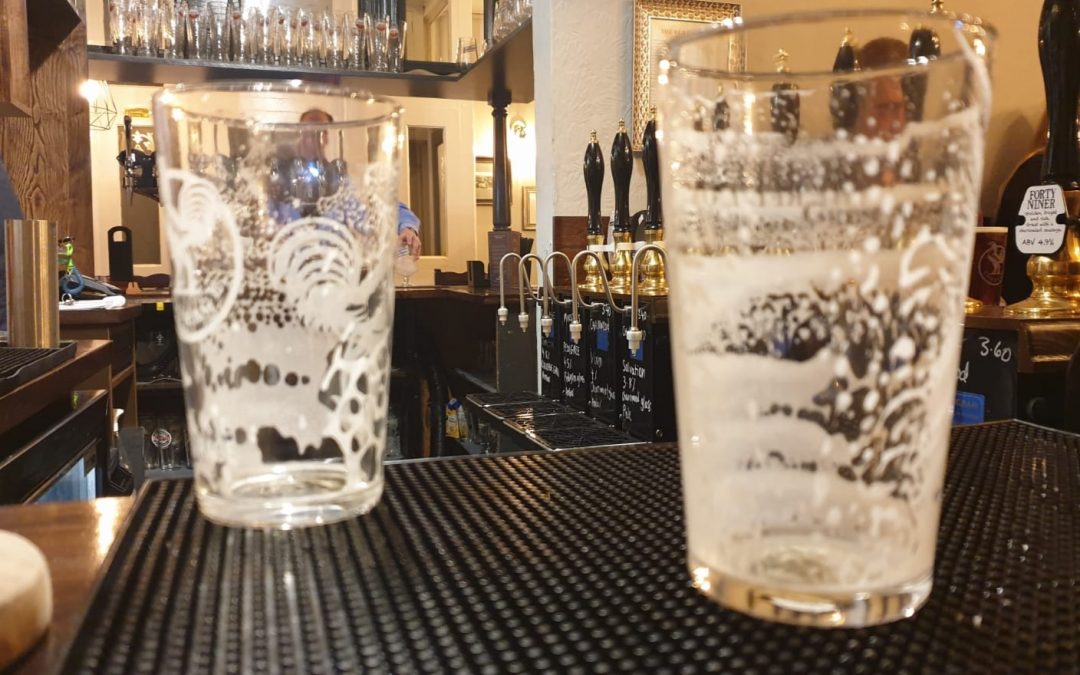The brewer goes to great lengths to ensure that the cask ale they brew is as near to perfection when it leaves the brewery. However, the brewing process is not complete at this stage. A secondary fermentation, in a temperature-controlled environment, is also needed. If this is not allowed time to be fully completed, the beer will not have a right flavour and taste distinctly yeasty. The fermentation continues in the drinker’s gut – with the well-known, associated side effects!
There are also finings within the cask to collect clotted yeast cells and other organic matter at the bottom of the barrel. When this is complete the cellarman knows the beer has dropped bright. Often the inexperienced cellarman or just the pressure to put on a beer for service, will put a dropped bright cask on for service, when conditioning is still taking place. The beer is clear- so why not? Well the conditioning is not complete, and the flavour will have not had time to fully develop. As for clarity, you should be able to clearly see you fingerprint through the glass when the beer has dropped bright. So, the quality of your cask ale pint is very much down to where you buy it and how much care and attention the cellarman uses in their craft.
Once fully conditioned the beer is tested within the cellar before being placed into service. This is often called the CAT test. CAT = Clarity, Aroma and Taste.
Even when the cask is in service care must be taken to ensure it continues to reach the customer is absolutely perfect condition. The cellar temperature must be around 11-13 oC. The lines must be clean, the fitting must be clean, the glass must be clean and washed in soft water. The glass must be the right shape. The pints first pull is critical as this is what gives the beer its head. With the sparkler outlet at the bottom of the glass and the glass parallel to the long spout, a steady pull up to the to the halfway mark and a short time for settling allowed. The final pull should bring the beer up to the line with a fine head of around 10mm. After a short time, the beer should start to clear from the base and the flavour should be just perfect. It should also lace down the glass as you drink it.
It really is easy to serve beer that is bad, indifferent and downright awful but takes craft, experience and time to get it right.
The conditioning process can be four to five days for a beer such as Timothy Taylor Landlord or the stronger bitters but only two days for a Fullers London Pride. There are many reasons for this, but one is that the London Pride comes partly conditioned, so it takes less time. Again, it’s the cellarman’s experience that knows what sort of time to expect. Even so, the real craftsman checks at various times through the process. The CAT test is the final layer of quality assurance and is carried out before each service.
Finally, if you have a beer that tastes sour, vinegary and smells somewhat rank it is likely too old. This can happen to the best kept beers if they don’t sell quickly enough. To enable the beer to be delivered, air is required to be drawn into the system to stop a vacuum being formed. This air naturally contains bacteria and over time this can destroy the chemical make-up of the beer. As the system is not pressurised, the beer also loses its carbonation over a short period of time and will also taste stale. Three to four days is the maximum time a beer should be on. So, pubs that have a slow trade or carry too many options for their footfall can experience this. It’s best to frequent busy pubs where the turnover is good, and they are likely to be getting through a cask every one to two days.
So next time you order a pint remember the craft that goes into it. Cheers!


Recent Comments